The Dirty Half Dozen
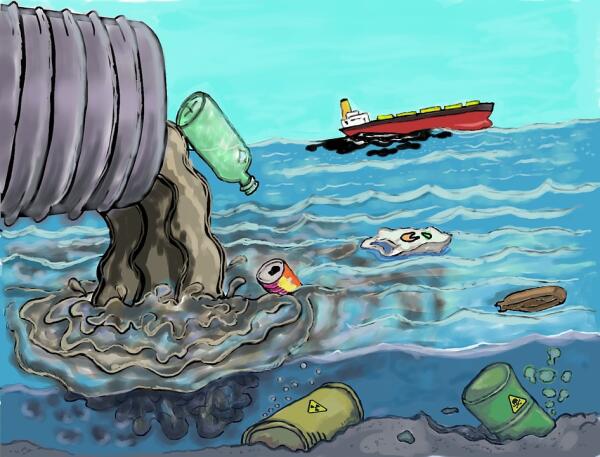
The exploitation of earth's resources has produced wealth and progress, but it has also caused massive problems and inequality. The world now stands on the edge of an environmental precipice and the future depends on the next steps we take.
Some claim that a more circular economy reliant on renewable energy and recycling and reuse can lead us away from the abyss. However, to make progress down that road "business as usual" will no longer be an option.
Some types of businesses present more of an obstacle than others to a more circular economy. In this blog we identify six of what we consider to be the more earth unfriendly industries, our "dirty half dozen."
This group has in their various ways wreaked havoc on the environment over time — from emitting massive amounts of carbon to leaking toxins into the air and water. Most of these industries are likely all too familiar, but there may be one or two things about them that will surprise you. With each industry, we include suggested actions to help advance change.
1. Plastics and Packaging
There are many materials produced by the plastic and packaging industries that impact the environment. Plastic debris has been decimating wildlife populations. Everything from six-pack rings to grocery bags and other debris are choking, trapping, and poisoning animals who innocently mistake these objects for food or simply become entangled in them.
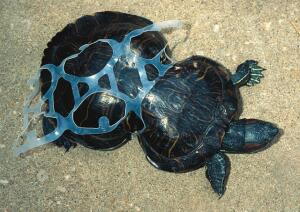 Photo: Stefan Leijon via Flickr
Photo: Stefan Leijon via Flickr
The plastic rings that hold together six-pack cans are one of the worst offenders when it comes to harming sea creatures. Though these rings are soft, they are also transparent, making it impossible for animals to see them in the water. Animals can get tangled in the loops, which can cut into their skin and constrict parts of their bodies, causing serious injury and even death. Some researchers indicate that at least 100 million marine mammals are killed each year due to plastic pollution.
Styrofoam, a type of plastic widely used in the carryout-food and shipping industries, produces similar problems. It is made from fossil fuel and a toxic ingredient called Styrene. The latter is especially harmful to workers who are involved in its manufacture as well as to neighborhoods near Styrofoam factories.
One of the most insidious things about Styrofoam is that it takes a long time to decompose. Most recycling companies don't accept Styrofoam or any type of polystyrene products, meaning this waste ends up in landfills or, too often, in the larger environment. Animals that consume Styrofoam can die due to starvation caused by blockages or from the toxins that Styrofoam absorbs like a sponge from its surroundings.
Many municipalities like the District of Columbia, Miami Beach, Seattle, Freeport, and New York City have completely or partially banned Styrofoam in order to reduce pollution and take action against the threat of climate change.
What you can do: Plastic products are ubiquitous, but see if you can find alternatives made from natural materials, such as wood, metal, or ceramics. For example, look for wooden options when it comes to hygiene products like toothbrushes, combs, and hairbrushes. Carry your own non-plastic cutlery with you to avoid having to use the plastic ones at places like carryout restaurants and festivals. Try to buy items in bulk in reusable containers; this eliminates individual packaging and may also save you money. Use a refillable water bottle, instead of buying a plastic bottle. Also, when you do buy individually packaged items try to find those using reusable or recyclable materials, such as edible six-pack rings or cardboard instead of Styrofoam. And, of course, bring reusable bags with you when you go shopping.
2. Textiles
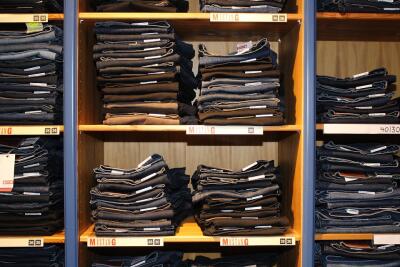 Currently, Americans are consuming clothes at a higher rate than ever before. In fact, the textile industry is said to be the second largest industry polluter in the world.
Currently, Americans are consuming clothes at a higher rate than ever before. In fact, the textile industry is said to be the second largest industry polluter in the world.
Cotton production is one of the worst offenders, and it represents nearly half the fibers used to make clothes and other textiles. Cotton requires up to 20,000 liters of water to produce 1kg of cotton, which is equivalent to one T-shirt or a pair of jeans. Cotton also accounts for 24% and 11% of global sales of pesticides and insecticides, respectively.
What you can do: When it comes to textiles, reduce your footprint by secondhand shopping, donating your unused or unwanted clothes, shoes, and other textiles, and getting the most out of your wardrobe before purchasing new items.
3. Transportation
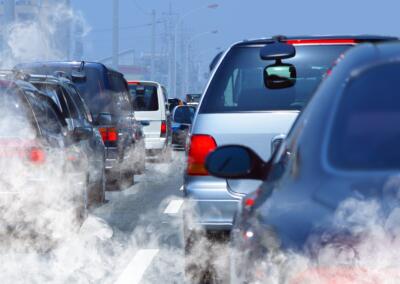 There are an estimated 1.2 billion cars on the road today, and the figure is expected to grow rapidly in the future. While emissions controls have reduce the volume of harmful gasses coming out of tailpipes, automobile transport is still responsible for large amounts of carbon emissions and other air pollutants. But cars are not the only culprits; aviation is also highly damaging to the environment.
There are an estimated 1.2 billion cars on the road today, and the figure is expected to grow rapidly in the future. While emissions controls have reduce the volume of harmful gasses coming out of tailpipes, automobile transport is still responsible for large amounts of carbon emissions and other air pollutants. But cars are not the only culprits; aviation is also highly damaging to the environment.
Aviation
Aviation represents a small portion of the transportation industry when compared to that of cars, but it has a disproportionately large impact on climate. In fact, aviation accounts for 4 to 9 percent of the total climate change impact due to human activity.
When compared to other types of transportation, air travel has a greater impact per passenger kilometer. It also produces the most emissions out of any type of transportation.
Although improved aerodynamics, greater engine efficiency, and higher passenger density have cut per-passenger emissions in half compared to 1990 levels, total aviation emissions have still increased by 3.6% every year, meaning emissions have doubled every 20 years.
Contrails, which are the cloud trails that you see behind a plane, also have a harmful impact on the environment. These cirrus clouds are formed when the hot, moist air released from the plane freezes in the cold, dry air. These contrails trap energy and create a warming of the atmosphere.

Researchers from the Institute for Atmospheric Physics at the German Aerospace Centre discovered that contrails have a greater impact on climate than the CO2 emissions from airplanes. The CO2 emissions from aviation changes radiation by 28 milliwatts per square meter, where contrails are responsible for a change of about 31 milliwatts per square meter. The difference is that emissions have a longer lifelong impact than contrails due to their ability to cause warming hundreds of years down the road.
Industry leaders including Boeing and Airbus published an open letter in September 2015 vowing to flatten aviation emissions by 2020 and cut them in half by 2050, compared with a 2005 baseline. These reductions in emissions will come from next-generation aircrafts that have lightweight carbon frames, more aerodynamic wings, and open-rotor engines.
What you can do: Automobiles are a part of everyday life, but even reducing your weekly drive by a few miles can make a difference. Walk or ride a bike when possible, carpool with your peers, or use public transportation. Many of us love to fly even more than we love to drive, so giving up that vacation to an exotic destination could be a lot to ask. However, there is a nascent movement to abandon jet travel and some people have already made incredible sacrifices, giving up flying entirely.
4. Logging
Forests are one of the most vital resources to life on Earth. They provide oxygen for us to breath, prevent erosion, and are an important buffer against climate change. They also provide habitat for a unique and diverse array of plants and animals.
Illegal logging, poor management practices, and the growing demand for wood products all contribute to the mass destruction of the world's forests. According to the World Wildlife Fund, forests are disappearing at the rate of 48 football fields per minute. Deforestation is especially severe in the most diverse regions of the world—including the Amazon, Borneo and Sumatra, the Congo Basin, and the Russian Far East. Half of the world's original forests have been lost as a result of deforestation.
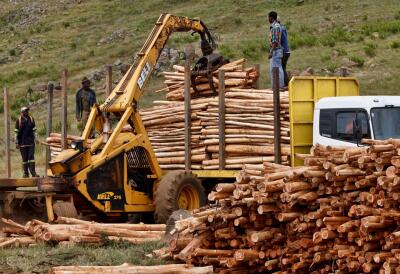
The damage from deforestation has devastating environmental impacts. Animals are losing their shelters and food sources, and are becoming more vulnerable to human-wildlife conflicts like hunting and poaching.
Poor forest management also promotes soil erosion by increasing runoff and reducing protection of the soil. Illegal and unsustainable practices can also cause governments to lose revenue. According to the World Bank, the global market loses $10 billion annually from illegal logging and individual governments lose an additional $5 billion.
What you can do: You can reduce your "forest footprint" by purchasing and using wood and paper products that are made from responsibly managed forests, recycling paper, and by using paperless billing. You can also get involved in one of the many local organizations planting trees by joining in a tree planting event or donating to support the cause.
5. Mining
In general, mining is very destructive, but some types of mining are much worse than others.
Strip and Open-pit Mining
Strip mining is highly destructive, yet the mining industry prefers it because it takes less labor and yields more coal than other methods.
Strip mining involves the use of heavy machinery that runs on diesel to clear trees, plants, and topsoil. Mining companies scrape away earth and rock to get to coal that's buried near the surface, destroying landscapes, forests, and wildlife habitats. This also leads to soil erosion and destruction of land that is used for agriculture.
This type of mining activity also has an effect on waterways. When it rains, lose topsoil washes into streams, polluting them with sediments. This can hurt the fish and plant life that have made the steam their habitat.
The toxic waste sludge that includes mercury, diesel, and other chemicals is placed into unlined dams, which can seep into groundwater and eventually find its way into the drinking water supply.
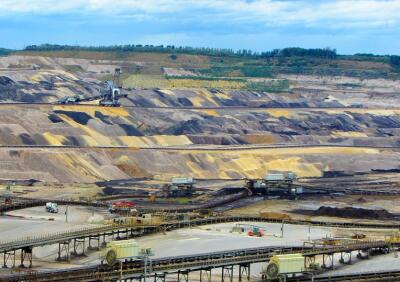
In open-pit mines, deep holes can affect the flow of surface and groundwater. This is comparable to digging a hole in the sand at the beach and watching as water seeps into the hole. Therefore, large pumps are installed at the bottom of the hole to keep water out.
The Berkeley Pit, a former open-pit copper mine located in Butte, Montana, contains 900 feet of water that is burdened with heavy metals and dangerous chemicals. When the mine closed in 1982, the water pumps that keep the water out were turned off. Since its closing, water has continued to fill the pit, putting it within 150 feet of the natural groundwater level. This presents a serious concern because the toxic water has the potential to seep into surrounding groundwater, thus contaminating the public water supply.
Underground Mining
The majority of the world's coal is obtained through underground mines. Although less harmful than strip mining, underground causes massive amounts of waste to be brought to the surface—waste that often becomes toxic when it comes in contact with air and water.
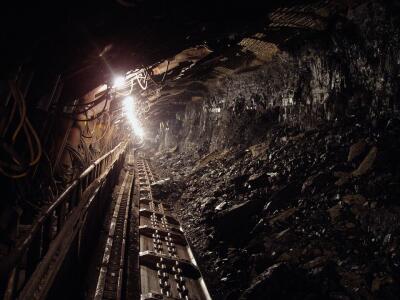
Coal mine methane, which is 84 times as powerful as carbon dioxide, forms during the geological formation of coal and is released during the coal mining process. While the majority of this methane is captured and used for different types of fuel, it is rare that it all gets used.
Diamond Mining
The mining industry doesn't only effect the environment. The blood diamond conflict is defined by the United Nations as "a diamond that originates from areas controlled by forces or factions opposed to legitimate and internationally recognized governments, and are used to fund military action in opposition to those governments, or in contraventions of the decisions of the Security Council."
This means that anytime someone buys a diamond that was mined from an area that is in a war or armed conflict, essentially the buyer is financing that war or armed conflict. However, most of the time this is done secretly and the consumer is unaware that they are help funding a war.
Illegal Gold Mining
Due to the high demand of gold, the price of the sacred material has skyrocketed over the past decade, which has triggered an illegal mining boom in areas like Asia, Africa, and Central South America.
These operations are often small but the impact is huge as miners use toxic mercury to separate the gold from other minerals. The mercury then finds its way into rivers and streams, killing aquatic life. It also cumulates into the bodies of fish that are eaten by humans.
According to the Amazon Conservation Association, 30,000 miners have invaded the Amazon Rainforest in Southeastern Peru. Research from the organization shows that 9 out of 15 fish species consumed by people in the area contained mercury that exceeded the safety limits established by the EPA. Researchers also detected high mercury levels in 78% of residents in the region's capital.
What you can do: You can help by supporting groups that oppose the expansion of mining sensitive areas. Groups like Earthjustice work to stop coal extraction and mining. You can also support groups like the Amazon Conservation Association, which works to protect biodiversity and develop conservation tools to protect land in the Amazon region. You can also help to exterminate the blood diamond conflict by demanding details about the diamonds you buy to ensure that they are from a conflict-free area.
6. Chemical Manufacture
The chemical industry harnesses basic ingredients to produce an assortment of products that are usually not seen or used by consumers but are components of, or required to manufacture other consumer and industrial goods.
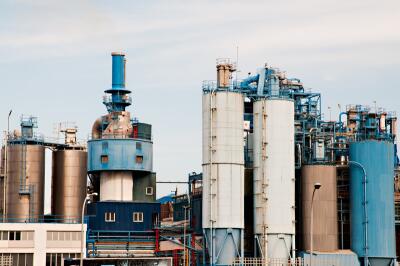
These products include natural gases, alcohols, solvents, polyester, pigments, and sulfur, which are used to make cars, boats, carpet, sports equipment, roofing, tires, pharmaceuticals, and a large assortment of other everyday products.
Of the estimated 140,000+ chemicals in the global market, many of which are prevalent in consumer goods, including electronics and toys, only a fraction have been closely evaluated to determine their safety and effects on the environment and human health.
During the production of chemicals, dangerous by-products and waste are often generated and released into the land, air, and water, having an impact on both environmental and human health.
Can you take a guess of where in the world the most chemical manufacturing takes place? Unfortunately, it's right here in the United States. The chemical industry is one of the United States' largest manufacturing industries and accounts for over 15% of global chemical shipments, making it a world leader for both production and export.
In a 2012 report, the United Nations Environment Programme (UNEP) urged the chemical industry to address the management of chemicals due to the increasing health and environmental risks associated with production, use, and disposal. This should come as no surprise as the industry jumped from having a value of $171 billion in 1970 to a whopping $4.12 trillion (about 2,400 times greater) in 2010.
At the time the report was released, UNEP Executive Director Achim Steiner said, "Pollution and disease related to the unsustainable use, production, and disposal of chemicals can hinder progress towards key development targets by affecting water supplies, food security, well-being, or worker productivity."
What you can do: Within your home, try to reduce the amount of chemicals that you use. There are plenty of alternative ways to clean your house with natural products that you probably already have lying around. You can also support organizations such as the Union of Concerned Scientists that are attempting to reduce the harms from the chemical industry.
Every Change Helps
While this is simply just a small list of the industries that have a harmful effect on the environment, it is not a full comprehensive list of offenders. There are many other industries out there damaging our planet and it's important to know them and the dangers they pose.
Remember, what you do counts. By just making a few simple changes to your everyday lifestyle, you can be a part of a growing movement for change. And change is contagious; you may even inspire friends and family to make these changes, too!
